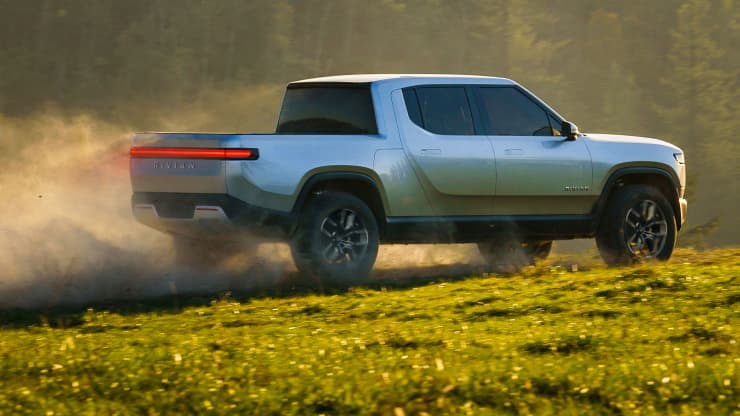Losses for Rivian Automotive (RIVN:NASDAQ) nearly tripled to $1.7bn in the second quarter, raising doubts that the electric vehicle company would be able to conserve cash and meet with customer orders in an economy bedeviled by inflation and interest rate hikes.
Revenue came in at $364 million versus $337.5 million expected. Adjusted loss per share for the quarter was $1.62 versus an expected adjusted loss of $1.63 per share. The company had $15.5 billion in cash and equivalents remaining as of June 30, down from $17 billion as of March 31. The company said it’s confident that cash is enough to fund its operations until it launches its upcoming smaller product platform, called R2, at its new factory in Georgia in 2025.
The auto maker affirmed its 2022 production guidance of building 25,000 vehicles by the year’s end, but said its operating loss is expected to grow to $5.45 billion, from its previous projection of $4.75 billion for the full year. Rivian said it expects $2 billion in capital expenditures for the full year, down from $2.6 billion in its May guidance.
The company said in its shareholder letter that the guidance revisions reflect its current estimates of impacts from its delayed production ramp, higher raw material costs and freight expenses, and continuing supply-chain challenges.
“We’ve seen unprecedented levels of inflation, especially across our raw material inputs and lithium prices,” said Claire McDonough, Rivian’s finance chief. “We’ve also experienced increased costs in regard to our expedited freight expenses,” she said.
However, the company is hopeful that losses would shrink as its plant in Normal, Ill., runs closer to full capacity of building 150,000 a year. To hit this target, Rivian said it would have to run the factory on both a day and a night shift. Rivian is also seeking to rein in rising operation costs by increasingly shipping vehicles by rail instead of by truck, which is cheaper but could result in a longer delivery time to customers, Ms. McDonough said.
Rivian started manufacturing vehicles for the first time late last year. But the California-based SUV and truck maker has struggled with parts-related problems that slowed production for the first half of the year.
Rivian’s ability to hit that target took on a greater sense of urgency as rising interest rates and inflation stoked fears of a potential recession. The company last month said it would cut 6% of its workforce and slash spending. The company states that the cuts were needed to ensure the company could meet its production goals without having to raise additional cash.
The company’s quest to meet its production target and boost long term sales were dealt a blow this week with lawmakers proposing to add new restrictions to a $7,500 tax credit available to electric-vehicle buyers. The revisions would add a price cap to current subsidy, making any electric truck and SUV costing $80,000 or more ineligible for the federal credit.
Rivian has said most of its vehicles sell for more than that amount. As a result, the company said the changes put it at a disadvantage to more established car makers, who used the tax credit to grow their EV businesses.
Rivian said Thursday it had about 98,000 net preorders for its R1-series truck and SUV as of June 30. The company delivered 4,467 vehicles during the second quarter. Last month, Rivian delivered the first of its battery-powered delivery vans to Amazon.com Inc. The deliveries are part of its contract to deliver 100,000 vans to Amazon (AMZN:NASDAQ) by 2030.
Shares of Rivian finished 4.14% at the end of Thursday’s session, and traded 0.80% at the close of the bell when the company released its earnings report.

